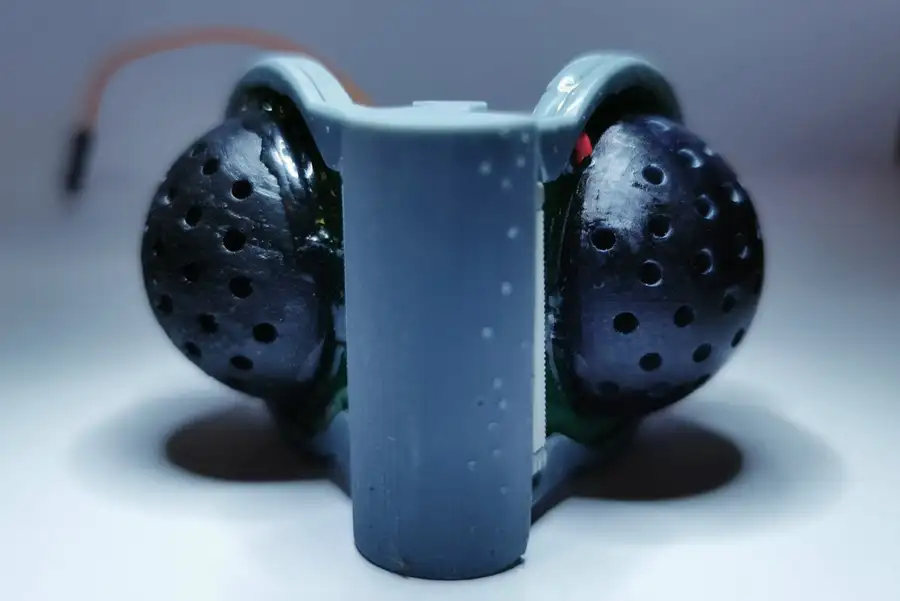
In the ever-evolving landscape of robotics and artificial intelligence, researchers continually seek innovative ways to enhance the capabilities of machines. One of the latest breakthroughs draws inspiration from the natural world, specifically from the complex and efficient visual systems of insects. This novel approach could revolutionize the way robots perceive their environment, offering them a significantly wider and more nuanced field of view.
The Marvel of Insect Eyes
Insects, such as flies and bees, possess compound eyes that are marvels of natural engineering. Unlike the single-lens eyes of humans, compound eyes consist of thousands of tiny visual units called ommatidia. Each ommatidium captures a portion of the visual field, collectively creating a mosaic-like image. This structure provides insects with several advantages:
- Wide Field of View: Insect eyes can cover almost a full 360-degree panorama, allowing them to detect movement and navigate efficiently.
- High Sensitivity to Motion: The multiple lenses enable insects to detect rapid movements with exceptional accuracy, crucial for survival in predator-rich environments.
- Depth Perception: Despite their small size, insect eyes can discern depth and distance, facilitating complex behaviors such as flight and foraging.
Translating Biology into Technology
Inspired by these attributes, scientists and engineers are developing cameras that mimic the structure and function of insect eyes. These biomimetic cameras aim to endow robots with similar visual advantages, potentially transforming their operational efficiency and adaptability.
Key Features of Insect-Inspired Cameras
- Omnidirectional Vision: By incorporating multiple micro-lenses, these cameras can provide robots with a nearly 360-degree view of their surroundings. This capability is particularly beneficial for applications requiring extensive situational awareness, such as autonomous driving, aerial drones, and robotic surveillance.
- Enhanced Motion Detection: The design allows for superior detection of movement, aiding robots in dynamic environments where quick responses are essential. For example, in search and rescue missions, robots could better navigate through debris and identify moving objects or survivors.
- Compact and Lightweight: Mimicking the compact structure of insect eyes, these cameras can be made lightweight and small, making them ideal for integration into various robotic platforms without adding significant bulk or weight.
Applications and Implications
The potential applications for insect-inspired cameras in robotics are vast and varied:
- Autonomous Vehicles: Self-driving cars equipped with these cameras could achieve safer navigation through enhanced peripheral vision and improved detection of pedestrians and other vehicles.
- Aerial Drones: Drones could benefit from the wide field of view for better navigation and obstacle avoidance, essential for tasks ranging from aerial photography to delivery services.
- Medical Robotics: In surgical robots, these cameras could provide surgeons with a more comprehensive view of the operating field, improving precision and outcomes.
- Industrial Automation: Robots in manufacturing and warehousing could use enhanced vision systems to streamline operations, detect defects, and increase overall efficiency.
Future Directions
While the concept is promising, there are still challenges to overcome. For instance, integrating the high-resolution capabilities of human-like cameras with the wide-angle vision of insect-inspired designs is a complex task. Additionally, processing the vast amount of visual data in real-time requires advanced algorithms and significant computational power.
Nevertheless, the intersection of biology and technology continues to push the boundaries of what robots can achieve. By looking to nature for inspiration, researchers are not only solving existing problems but also unlocking new possibilities. As development progresses, insect-inspired cameras could become a cornerstone of next-generation robotics, leading to smarter, more versatile machines that better understand and interact with the world around them.
The fusion of biological principles with cutting-edge technology represents an exciting frontier in robotics. Cameras inspired by insect eyes exemplify this trend, offering a glimpse into a future where robots can see the world in ways previously thought impossible. The journey from observing the natural world to transforming technological paradigms is a testament to human ingenuity and the endless potential of innovation.



